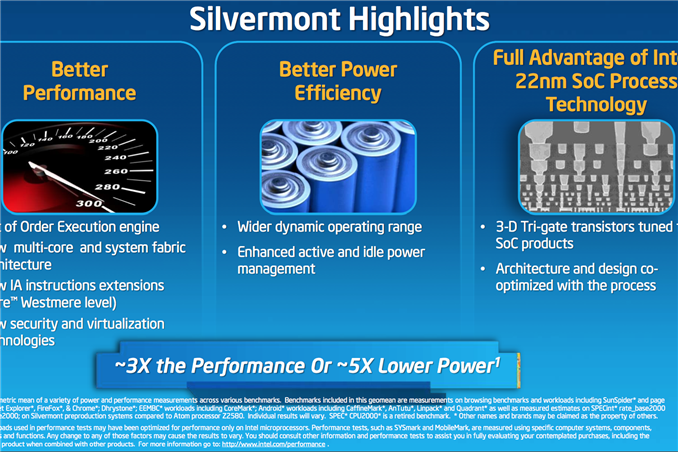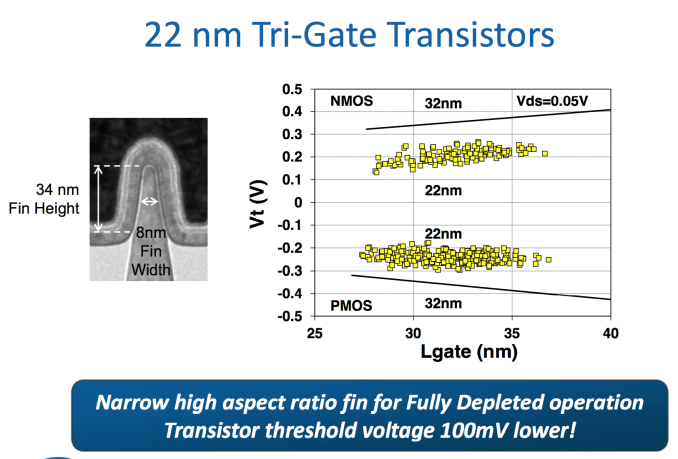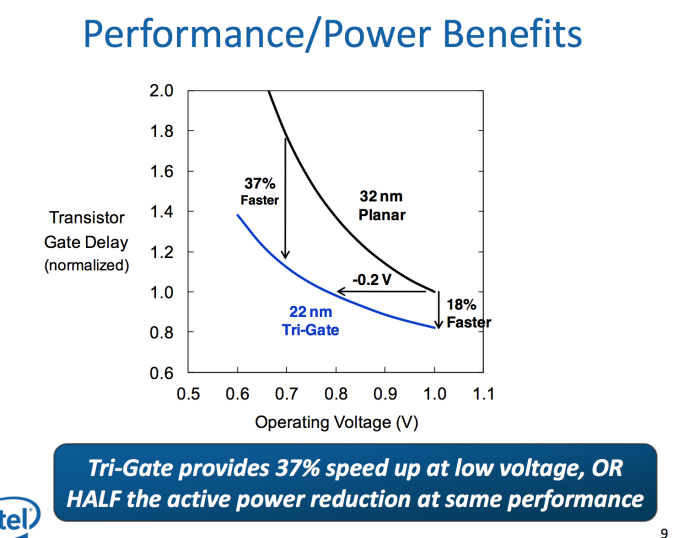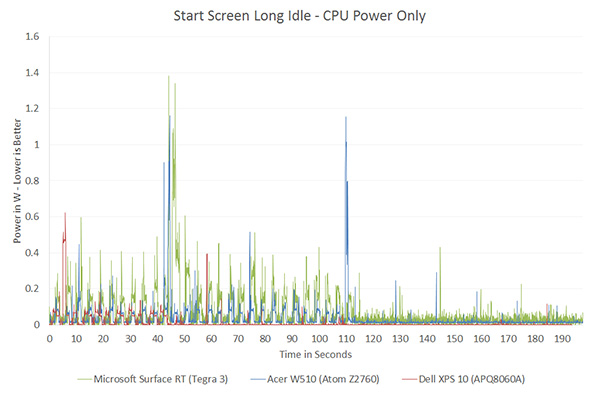Intel’s Silvermont Architecture Revealed: Getting Serious About Mobile
by Anand Lal Shimpi on May 6, 2013 1:00 PM EST- Posted in
- CPUs
- Intel
- Silvermont
- SoCs

The most frustrating part about covering Intel’s journey into mobile over the past five years is just how long it’s taken to get here. The CPU cores used in Medfield, Clover Trail and Clover Trail+ are very similar to what Intel had with the first Atom in 2008. Obviously we’re dealing with higher levels of integration and tweaks for further power consumption, but the architecture and much of the core remains unchanged. Just consider what that means. A single Bonnell core, designed in 2004, released in 2008, is already faster than ARM’s Cortex A9. Intel had this architecture for five years now and from the market’s perspective, did absolutely nothing with it. You could argue that the part wasn’t really ready until Intel had its 32nm process, so perhaps we’ve only wasted 3 years (Intel debuted its 32nm process in 2010). It’s beyond frustrating to think about just how competitive Intel would have been had it aggressively pursued this market.
Today Intel is in a different position. After acquisitions, new hires and some significant internal organizational changes, Intel seems to finally have the foundation to iterate and innovate in mobile. Although Bonnell (the first Atom core) was the beginning of Intel’s journey into mobile, it’s Silvermont - Intel’s first new Atom microarchitecture since 2008 - that finally puts Intel on the right course.
Although Silvermont can find its way into everything from cars to servers, the architecture is primarily optimized for use in smartphones and then in tablets, in that order. This is a significant departure from the previous Bonnell core that was first designed to serve the now defunct Mobile Internet Devices category that Intel put so much faith in back in the early to mid 2000s. As Intel’s first Atom architecture designed for mobile, expectations are high for Silvermont. While we’ll have to wait until the end of the year to see Silvermont in tablets (and early next year for phones), the good news for Intel is that Silvermont seems competitive right out of the gate. The even better news is that Silvermont will only be with us for a year before it gets its first update: Airmont.
 Intel made this announcement last year, but Silvermont is the beginning of Intel’s tick-tock cadence for Atom. Intel plans on revving Atom yearly for at least the next three years. Silvermont introduces a new architecture, while Airmont will take that architecture and bring it down to 14nm in 2014/2015. One year later, we’ll see another brand new architecture take the stage also on 14nm. This is a shift that Intel needed to implement years ago, but it’s still not too late.
Intel made this announcement last year, but Silvermont is the beginning of Intel’s tick-tock cadence for Atom. Intel plans on revving Atom yearly for at least the next three years. Silvermont introduces a new architecture, while Airmont will take that architecture and bring it down to 14nm in 2014/2015. One year later, we’ll see another brand new architecture take the stage also on 14nm. This is a shift that Intel needed to implement years ago, but it’s still not too late.
Before we get into an architectural analysis of Silvermont, it’s important to get some codenames in order. Bonnell was the name of the original 45nm Atom core, it was later shrunk to 32nm and called Saltwell when it arrived in smartphones and tablets last year. Silvermont is the name of the CPU core alone, but when it shows up in tablets later this year it will do so as a part of the Baytrail SoC and a part of the Merrifield SoC next year in smartphones.
22nm
To really understand the Silvermont story, you need to first understand Intel’s 22nm SoC process. Two years ago Intel announced its 22nm tri-gate 3D transistors, which would eventually ship a year later in Intel’s Ivy Bridge processors. That process wasn’t suited for ultra mobile. It was optimized for the sort of high performance silicon that was deployed on it, but not the ultra compact, very affordable, low power silicon necessary in smartphones and tablets. A derivative of that process would be needed for mobile. Intel now makes two versions of all of its processes, one optimized for its high performance CPUs and one for low power SoCs. P1270 was the 22nm CPU process, and P1271 is the low power SoC version. Silvermont uses P1271. The high level characteristics are the same however. Intel’s 22nm process moves to tri-gate non-planar transistors that can significantly increase transistor performance and/or decrease power.
This part is huge. The move to 22nm 3D transistors lets Intel drop threshold voltage by approximately 100mV at the same leakage level. Remember that power scales with the square of voltage, so a 100mV savings depending on what voltage you’re talking about can be very huge. Intel’s numbers put the power savings at anywhere from 25 - 35% at threshold voltage. The gains don’t stop there either. At 1V, Intel’s 22nm process gives it an 18% improvement in transistor performance or at the same performance Intel can run the transistors at 0.8V - a 20% power savings. The benefits are even more pronounced at lower voltages: 37% faster performance at 0.7V or less than half the active power at the same performance.
The end result here is Intel can scale frequency and/or add more active logic without drawing any more power than it did at 32nm. This helps at the top end with performance, but the vast majority of the time mobile devices are operating at very lower performance and power levels. Where performance doesn’t matter as much, Intel’s 22nm process gives it an insane advantage.
If we look back at our first x86 vs. ARM performance data we get a good indication of where Intel’s 32nm process had issues and where we should see tangible improvements with the move to 22nm:
Qualcomm’s 28nm Krait 200 was actually able to get down to lower power levels than Intel could at 32nm. Without having specific data I can’t say for certain, but it’s extremely likely that with Silvermont Intel will be able to drive down to far lower power levels than anything we’ve ever measured.
Understanding what Intel’s 22nm process gives it is really key to understanding Silvermont.













174 Comments
View All Comments
Kevin G - Monday, May 6, 2013 - link
Actually I've gotten the impression from Anandtech that Intel has been so tardy on providing chips for the mobile market that they may have lost the fight before even showing up. Intel may have good designs and the best foundries but that doesn't matter if ARM competitors arrive first with 'good enough' designs to gobble up all the market share. There is a likely a bit of frustration here constantly hearing about good tech that never reaches its potential.There was the recent line in the news article here about Intel's CEO choice about how Intel is foundry that makes x86 processors. That choice was likely selected due to Intel's future of becoming an open foundry to 3rd party designs. Intel has done this to a limited degree already. They recently signed a deal with Microsemi to manufacture FPGA's on Intel's 22 nm process. Presumably future Microsemi ARM based SoC + FGPA chips will also be manufactured by Intel as well.
Kidster3001 - Tuesday, May 7, 2013 - link
Intel has publicly stated that it's foundry business will never make products for a competitor. That means no ARM SoC's in Intel fabs.Kevin G - Tuesday, May 7, 2013 - link
Intel isn't active in the FPGA area, well there than manufacturing them for a handful of 3rd parties. The inclusion of an ARM core inside a SOC + FGPA design wouldn't be seen as a direct competitor. Indirectly it definitely would be a competitor but then again just the FPGA alone would be an indirect competitor.name99 - Monday, May 6, 2013 - link
Actually the REAL history is- Intel article appears. All the ARM fans whine about how unfair and awful it is, and how it refers to a chip that will only be released in six months.
- ARM article appears. All the Intel fans whine about how unfair and awful it is, and how it refers to a chip that will only be released in six months.
- Apple (CPU) article appears. Non-Apple ARM and Intel fans both whine about how unfair it is (because of tight OS integration or something, and Apple is closed so it doesn't count).
Repeat every six months...
Bob Todd - Tuesday, May 7, 2013 - link
Winner winner chicken dinner. I love how butt hurt people get about any article comparing CPU or GPU performance of two or more competitors (speculatively or not). I have devices with Krait, Swift, Tegra 3, Bobcat, Llano, Ivy Bridge, etc. They all made sense at the time for one reason or another or I wouldn't have them. I'm excited about Slivermont, just like I'm excited about Jaguar, and whatever Apple/Samsung/Qualcom/Nvidia cook up next on the ARM side. It's an awesome time to be into mobile gadgets. Now I'll sit back and laugh at the e-peen waiving misguided fanboyism...axien86 - Monday, May 6, 2013 - link
Acer is shipping new V5 ultraportables based on AMD's Jaguar high performance per watt technology in 30 days. AMD is 10 to 20 times smaller than Intel, but with design wins from Sony, Microsoft and now many other OEMs, they are delivering real performance for real value.
By contrast Intel really has nothing to show, but endless public relations to compensate for a history of company that has been upstaged by smaller companies like AMD in forging real innovations in computing.
A5 - Monday, May 6, 2013 - link
If by "high performance per watt" you mean "less performance in a higher TDP" than sure. Intel trounces AMD in notebooks for a reason.As for the Sony/MS stuff, I doubt Intel even bid for those contracts.
kyuu - Monday, May 6, 2013 - link
I hope you're kidding. Bobcat-based designs have been superior to Atom for forever, and if you take graphics performance into account, then Atom has been nothing short of laughable. I wouldn't be surprised if Silvermont beats Jaguar in CPU performance, but it'll be a small delta, and Jaguar is coming out a full half-year ahead of Silvermont.It's also nice that Intel might get GPU performance around the level of the iPad 4's SoC by the end of the year, but I believe AMD's mobile graphics already handily surpass that and the ARM world will have moved on to solutions that handily surpass that by then as well. So, yet again, Intel will be well behind the GPU curve. It won't be laughably bad anymore, though, at least.
And I really love that last line. "Intel didn't get some design wins? Well, psh, they totally didn't even want those anyway."
kyuu - Monday, May 6, 2013 - link
Oh, and also not sure why you brought notebooks up when we're talking about architectures for very low-power devices like tablets, netbooks, and maybe some ultrathins. No one would claim that Trinity/Richland is at the same level of CPU performance as Ivy Bridge/Haswell. Personally, though, I'd still prefer an AMD solution for a notebook for the superior graphics, lower price, and more-than-adequate CPU performance.xTRICKYxx - Tuesday, May 7, 2013 - link
This is where I want AMD to come into play. Their low power CPU's are so much better than Atom ever was, and always had superior graphics.